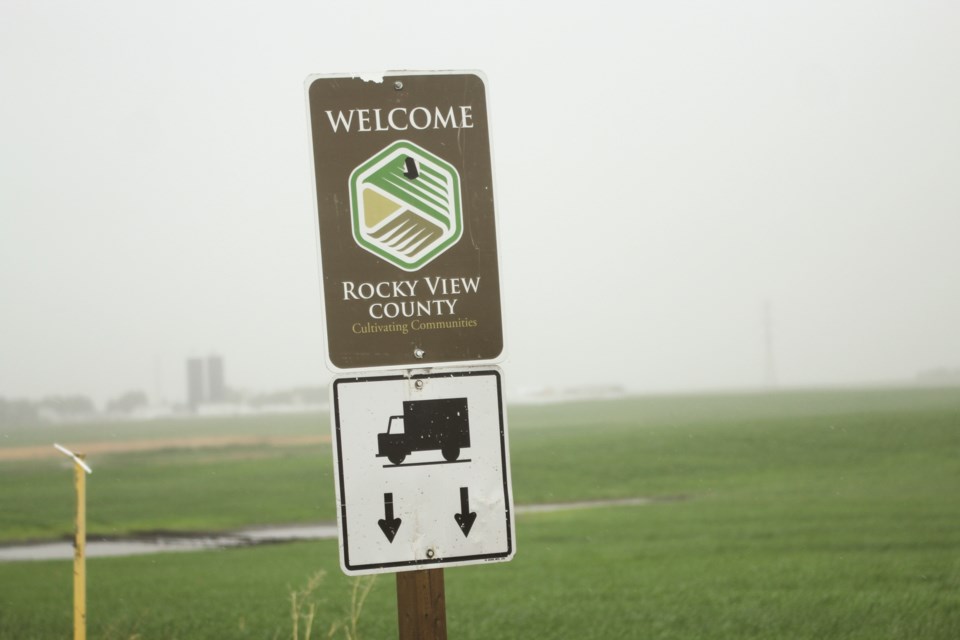Due to a recent spike in active COVID-19 cases, Alberta Health Services (AHS) has officially placed Rocky View County (RVC) under "watch" status.
As of Oct. 30, RVC recorded 23 active cases, according to AHS data. With a population of roughly 43,000 people, this gave the county a rate of 53 active cases per population of 100,000 residents. The threshold for being placed under watch status is 50 active cases per 100,000 population.
Bart Goemans, RVC's manager of Marketing and Communications for RVC, said the County's Emergency Management team continues to work with AHS and the Alberta Emergency Management Agency to monitor the local situation and will adjust actions if needed.
"The health and well-being of our community is a top priority and up-to-date response information can be found at rockyview.ca/covid19, including general information, County operational status, as well as links to resources," he said in a statement.
While Cochrane is still faring quite well in its battle against COVID-19 with only five active cases as of press time, Chestermere reported 55 cases as of Oct. 30. This total gives the city a rate of 263 cases per population of 100,000 and places it under watch status. In a video address to residents on chestermere.ca, Mayor Marshall Chalmers noted this was the highest total registered in Chestermere to date.
Due to the increase, Chalmers said Chestermere City council, as well as the Emergency Management Committee, "is considering whether we need to implement more stringent measures to stop the spread of the virus." Chalmers noted those measures would not be implemented out of fear, but out of common sense to protect the community.
"The evidence says that the spread is most likely happening through personal connections at private gatherings, not generally at grocery stores or at businesses," he said. "This means that many people are doing the right things and we do not feel the need to implement a mask bylaw or other measures locally at this time.
"However, we want to echo Dr. [Deena] Hinshaw’s message that there is no one magic bullet – we must keep doing all the right things to limit the spread in Chestermere," he said.
The surge in local cases is consistent with the rest of the province. In recent weeks, Alberta has experienced a spike in COVID-19 cases.
At a briefing Oct. 26, Hinshaw, Alberta's chief medical officer of health, reported a three-day average of 480 cases during the Oct. 23 to 25 weekend, including a record-high 572 cases reported Oct. 24. As of press time, the province had more than 4,900 active cases and 318 people have died from the virus.
“We have now crossed a tipping point and are losing the balance we have been seeking,” Hinshaw said. “You have heard me say many times that we need to achieve a balance between minimizing the risk of COVID-19 and minimizing the risk of harms of restrictions.”
According to Hinshaw, there are currently 130 COVID-19 patients in Alberta’s hospitals as of Oct. 30, including 18 in intensive care units.
The vast majority of Alberta’s COVID-19 cases are in Edmonton and Calgary. To combat the recent spike, AHS has mandated a 15-person limit on social and family gatherings in those two cities, including parties, weddings, funerals, banquets and special event celebrations. The limit, which Hinshaw said will be in effect for one month, does not apply to structured events in which socializing is not the main purpose of the activity, such as restaurant dining, worship services, conferences or trade shows.
“Along with the mandatory limit on social gatherings, two voluntary public health measures will remain in place for Edmonton and will be put in place today for anyone living in or visiting Calgary,” she said.
The first voluntary measure includes wearing non-medical masks in all indoor work settings, Hinshaw said, except when “employees can be safely distanced from others or appropriate barriers are in place.” The second is to reduce the number of close contacts people have and reduce the connections between different networks.
“The tool we are using to accomplish this is a voluntary measure that all those in Edmonton or Calgary should belong to no more than three cohorts – a core cohort, including the household and a small group of people with whom exclusively you’ve agreed to gather; a school cohort; and one additional sport, social or other cohort,” she said.
Scott Strasser, AirdrieToday.com
Follow me on Twitter @scottstrasser19


